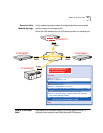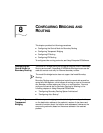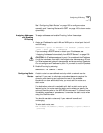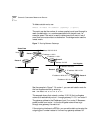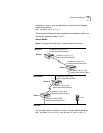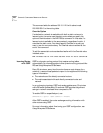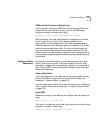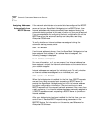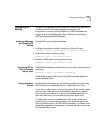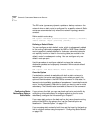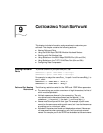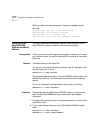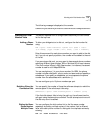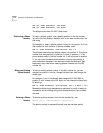
Configuring IP Routing 107
OSPF over Dial-On-Demand Dial-Up Lines
If you are going to be running OSPF over dial-on-demand dial-up lines,
and you do not want the line to come up just for an OSPF packet,
configure a demand interface circuit using:
SETDefault !<port> -OSPF DemandInterface = Enable
With this setting, the router negotiates with the neighbor at the other
end of the point-to-point link. If the neighbor agrees that the
point-to-point link is a demand circuit, the router suppresses sending
OSPF hello packets, which allows the data link connection to be closed
when not carrying application traffic. The line will still be brought up
every 30 minutes to resynchronize routing table information. For the
demand circuit to be cost-effective, make sure that it is isolated from as
many topology changes as possible because topology changes bring up
the interface.
Configuring Route
Redundancy
By configuring route redundancy, you can use a back-up line to route
traffic if your primary line fails. To configure a back-up line for route
redundancy, configure the line according to Chapter 7 and use either a
static route or OSPF. To use other dynamic routing protocols, see Using
Enterprise OS Software.
Using a Static Route
If you use a static route on the back-up line, but use a dynamic routing
protocol like OSPF on the primary line, use the Override option as
described in “Override Option” on page 106.
If you are using static routes for both lines, set the metric for the back-up
line to a higher number using the syntax in “Configuring Static Routes”
on page 109.
Using OSPF
Make sure the metric of the back-up line is higher than the primary line
using:
SHow [!<port> | !*] -OSPF Cost
If the cost for the back-up line is lower than the primary line, set the cost
manually to a higher number using:
SETDefault !<port> -OSPF Cost = <1-65535>



